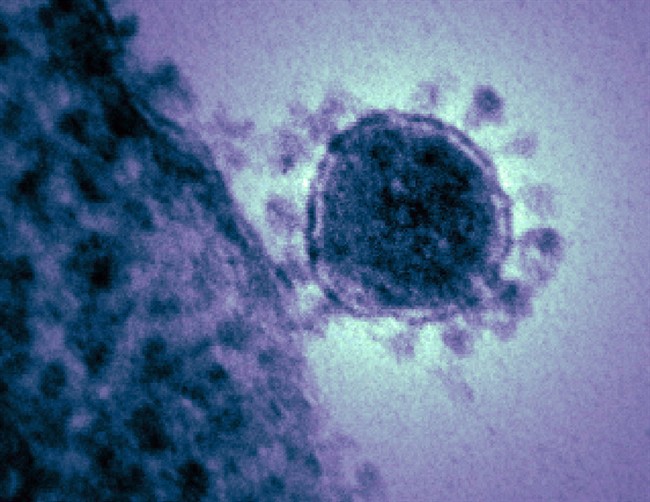TORONTO – Scientists have announced they have developed an animal model for the new coronavirus, an important development in the study of the new disease agent.

The work was done by researchers at the U.S. National Institute of Allergy and Infectious Diseases’ Rocky Mountain Laboratories in Hamilton, Mont.
The team, led by virologist Vincent Munster, found that the new coronavirus causes pneumonia in macaque monkeys.
Scientists have been working to develop an animal model since the virus was discovered last year.
Animal models are needed to study how a virus causes disease and to test potential tools to protect against it – drugs that might mitigate the infection and perhaps eventually candidate vaccines.
Munster says the team tried a smaller animal, which would have been easier for laboratories to work with, but the virus did not infect hamsters.
Dutch scientists have also been trying to develop an animal model for the virus, but found it doesn’t infect ferrets. That’s a bit of a surprise. Ferrets are the primary animal model for influenza and for the SARS virus, which is related to the new coronavirus.
Macaques would not have been anyone’s first choice for an animal model. The animals are large and expensive, and many people object to the use of non-human primates for research.
“I think any small animal model would be preferable,” Munster admits.
- ‘She gets to be 10’: Ontario child’s heart donated to girl the same age
- Bird flu risk to humans an ‘enormous concern,’ WHO says. Here’s what to know
- Shoppers faces proposed class action over claims company is ‘abusive’ to pharmacists
- ‘Bacterial vampirism’: Deadly pathogens attracted to human blood, study finds
Dutch virologist Ron Fouchier, who first identified the new virus last June, agrees, but says it is important to have a model in which to study this virus.
“When patients arrived in hospitals in Europe, we have been asked several times what treatment could be given to them,” Fouchier, who is with the Erasmus Medical Centre in Rotterdam, said in an email.
“Animal models such as this one may serve pre-clinical evaluation of intervention options, which will be quite useful if more patients are diagnosed with the virus.”
Three people who have been infected with the virus have flown to hospitals in Germany and Britain for treatment.
Fouchier says other researchers have also tried mice as a model, but without success.
Finding an animal model fulfills a series of tests known as Koch’s postulates, named after German scientist Robert Koch. In 1884 Koch and a colleague devised the tests that are still used to prove that a disease agent actually causes a disease.
The tests include finding the pathogen in all the people who are sick but not in those who are well. The pathogen must be shown to cause a similar disease in an animal and it must be possible to isolate it from infected animals.
The new coronavirus has caused 17 confirmed cases to date, 11 of them fatal. While the source of the virus remains a mystery, cases appear mainly to have emerged from countries in the Middle East. Saudi Arabia, Qatar, Jordan and the United Arab Emirates have reported cases. Britain has also reported three cases, in a family cluster. But the first person who got sick in that group returned ill from a trip to Pakistan and Saudi Arabia.



Comments